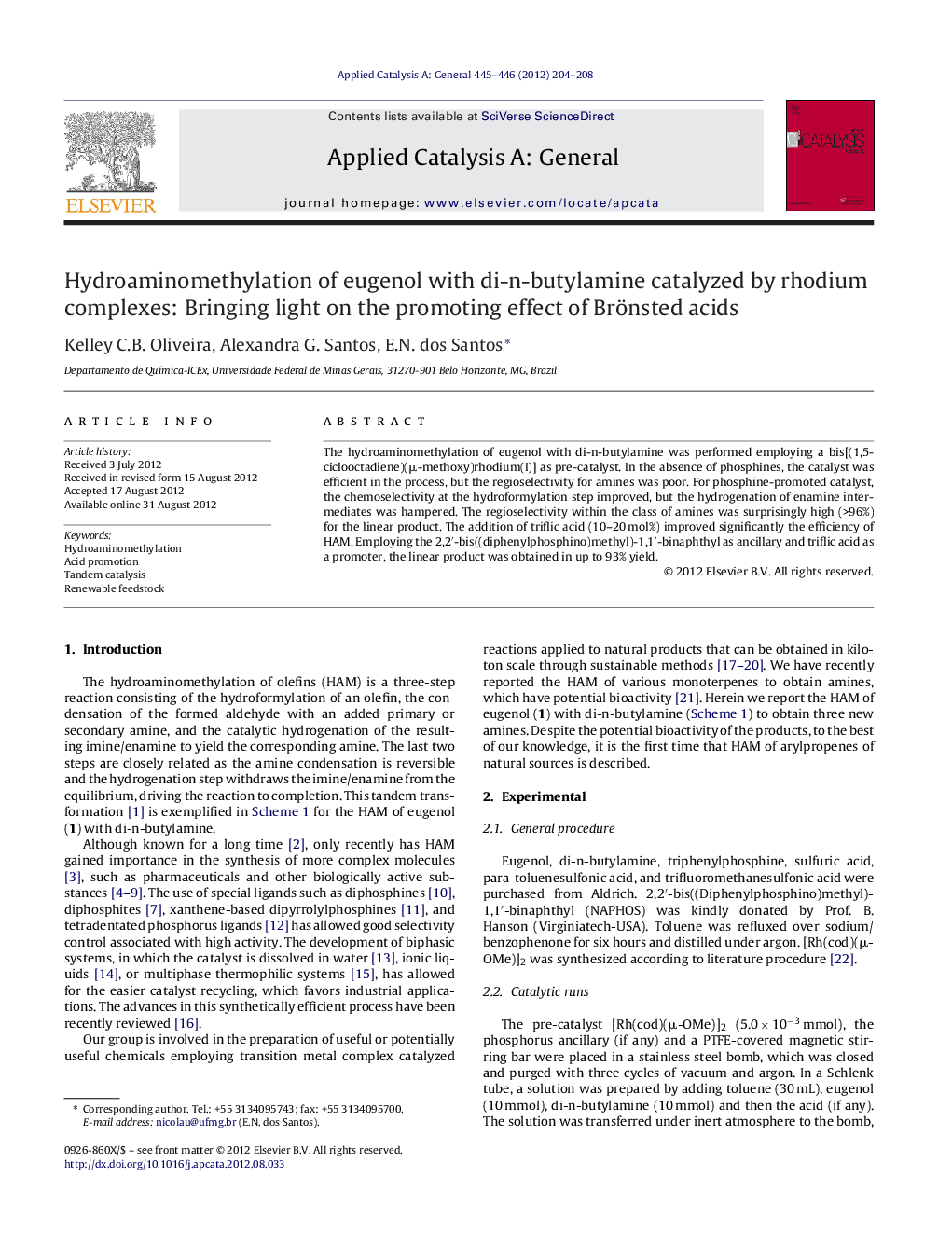| Article ID | Journal | Published Year | Pages | File Type |
|---|---|---|---|---|
| 40717 | Applied Catalysis A: General | 2012 | 5 Pages |
The hydroaminomethylation of eugenol with di-n-butylamine was performed employing a bis[(1,5-ciclooctadiene)(μ-methoxy)rhodium(I)] as pre-catalyst. In the absence of phosphines, the catalyst was efficient in the process, but the regioselectivity for amines was poor. For phosphine-promoted catalyst, the chemoselectivity at the hydroformylation step improved, but the hydrogenation of enamine intermediates was hampered. The regioselectivity within the class of amines was surprisingly high (>96%) for the linear product. The addition of triflic acid (10–20 mol%) improved significantly the efficiency of HAM. Employing the 2,2′-bis((diphenylphosphino)methyl)-1,1′-binaphthyl as ancillary and triflic acid as a promoter, the linear product was obtained in up to 93% yield.
Graphical abstractFigure optionsDownload full-size imageDownload high-quality image (90 K)Download as PowerPoint slideHighlights► The hydroaminomethylation of eugenol is reported for the first time. ► New amines are produced with yields reaching 93%. ► Brönsted acids with non-coordinating anions are better promoters. ► Trifluoromethanesulfonic acid is an excellent promoter for hydroaminomethylation.
